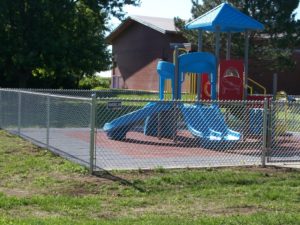Omaha Pool Safety and Requirements
I recently read a news report about a young child that suffered drowning related injuries. This is a very unfortunate event. What makes it unusual is that the pool was closed for the season. The child was able to get under the pool cover. Once in the pool, he was not able to escape due to the low water level and strong cover. Who would have thought that you have to worry about a pool that was closed and covered.
Anyone who has cared for a small child knows how fast and curious they may be. Children at this age lack a sense of danger. They are intrigued by water and often have fond memories swimming with their parents and friends.
The leading cause of drownings for the nearly 300 children under the age of 5 is due to the fact that the homeowners did not completely fence in their pools and failed to use self-closing, self-latching devices per code on gates. The Consumer Protection Safety Commission reports that child drownings are the second leading cause of accidental death children under 5 years old. This includes hot tubs as well. The Consumer Protection Safety Commission has determined that the greatest means to reduce these child drownings is for pool owners to construct and maintain full barriers around the pools and hot tubs. Most hot tubs are covered with snap on hasp. These are the same type hasp that children play with on their car seats and cribs. They often now how to snap the hasp.
CPSC publishes an annual report on accidental child drownings. Based on this report, they have identified some facts that you should know about pool safety.
• 300 children under the age of 5 drown in swimming pools, spas and hot tubs each year. This represents 75 percent of the 390 fatalities reported for children younger than fifteen.
• Children between the ages of one to three years represented 67 percent of the fatalities and 66 percent of reported injuries in pools and spas.
• Well over 4,100 children younger than 5 suffer drownings and that require emergency room care. Over half are injured and are admitted to the hospital.
• The large majority of drownings occur in pools owned by the family, friends or relatives.
• Portable pools of all types accounted for 10 percent of the total fatalities.
To prevent these pool drowning and injuries, all pools, spas and hot tubs should have a enclosure that meets the following:
1. The barrier should be at minimum 48” tall. Please check local codes and requirements as many communities require 72” tall barriers. If there is a planter or furniture near the fence or barrier that may reduce this distance, this item must be moved.
2. The maximum distance from the underside of the barrier to the top of the grade should not exceed 4”.
3. Openings in the barrier should not allow a 4-inch diameter sphere to escape through. The rule of thumb is that you may apply some reasonable force to the sphere so you may need to decrease the distance to account for flexible objects.
from the pool with self-closing hinges. This prevents children from simply pushing inward on the gate until it pops a weak latch.
4. All gate latches and locks should be located no less than 54 inches from the bottom of the gate. Often overlooked is the release mechanism that should be located on the pool side of the gate at least 3 inches below the top of the entrance.
5. Make sure that these fences are not easily climbable. Spacing between vertical members should not exceed 1¾ inches wide. Maximum mesh size for chain link fences should not exceed 1¼. This means that the standard chain link residential grade fencing may not be ideal for pool safety.
6. Gates to the pool should be equipped with self-locking hardware. Gates should open outward away
Though not required, we recommend the use of alarms on all gates. These are very affordable and easy to install. These alarms work on batteries and performs much like your smoke detectors when the battery gets weak it begins to beep. These devices are also available to tie into a home security system or any WIFI device.

